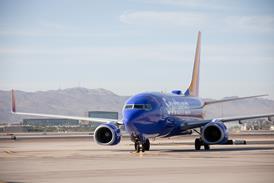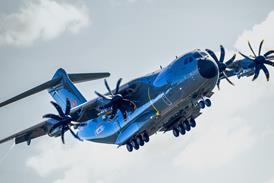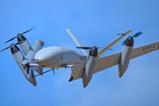The latest version of Boeing’s venerable F-15 multi-role fighter has received a major endorsement from the Pentagon office that tests and evaluates military hardware.
In its 2024 annual report, the Directorate of Operational Test and Evaluation (DOT&E) assessed the F-15EX to be “operationally effective” in an air superiority role, even when matched against fifth-generation aircraft.
“The F-15EX was able to detect and track all threats at advantageous ranges, use onboard and off-board systems to identify them, and deliver weapons while surviving,” the report states.
Notably, the twin-engined jet also scored well in the areas of reliability, availability and maintainability – achieving “nearly all objectives”, the report notes. Pilots surveyed also expressed a generally positive opinion of the fighter’s cockpit layout.
There was little doubt about the battle-proven F-15’s ability to prevail against fourth-generation threats, against which the Eagle family boasts an undefeated 104-0 combat record.
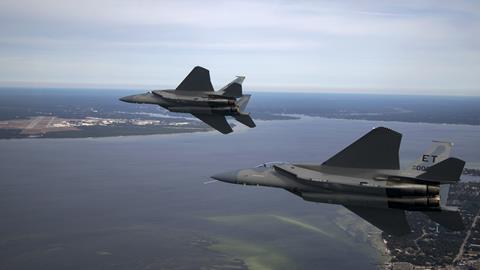
However, critics of the programme have argued the modernised Cold War fighter is ill-suited to compete with more advanced foes like Russia’s Sukhoi Su-57 or China’s Chengdu J-20.
Defying that narrative, the DOT&E says the F-15EX performed well in tests against “surrogate fifth-generation adversary aircraft” on both defensive and offensive counter-air missions. The Eagle II was also found to be effective in a basic air-to-ground strike role.
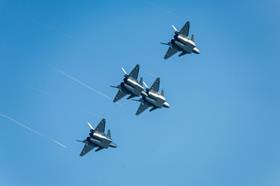
While the DOT&E does not reveal specific details about how it reached that conclusion, such as what air- and ground-based hazards were pitted against the F-15EX and what fifth-generation surrogate was employed, the office says the tests featured a threat level that was “adequate for the current F-15EX mission set”.
That mission includes a primary focus on air superiority roles such as offensive counter-air, cruise missile defence, defensive counter-air capabilities and escort of high-value airborne assets, with a secondary mission of air-to-ground precision strike.
Notably, evaluations did not include testing the F-15EX against the most advanced long-range weapon systems currently being developed and fielded, according to the DOT&E.
Data to support the conclusion of operational effectiveness was gathered during an open air vulnerability assessment conducted by the US Air Force (USAF) throughout 2024 at Eglin AFB in Florida. Eglin is home to an air force test wing and six test-configured F-15EXs delivered by Boeing for flight trials.
The airframer separately delivered the first two combat-configured examples to the USAF in 2025.
Subsequent F-15EX testing may take place using advanced simulation. Driven by limitations with available open air training facilities, the DOT&E notes the air force is exploring the feasibility of incorporating the Eagle II into the immersive Joint Simulation Environment (JSE) developed for the Lockheed Martin F-35.
The JSE “hyper-realistic digital range” features a network of cockpit simulators that are far more powerful than their standard flight training counterparts. Importantly, the secure digital environment allows the Pentagon to test sensitive tactics and capabilities it may wish to obscure from enemy surveillance assets able to monitor open air training.
One such asset is the advanced electronic warfare countermeasures system meant to help the non-stealthy F-15EX survive against the latest air defence systems.
Designed by BAE Systems, the Eagle Passive Warning Survivability System (EPAWSS) completed testing in 2024. The system offers a range of instantaneous capabilities across the electromagnetic spectrum, according to BAE, including radar warning, geo-location, situational awareness and protection against air defences.
The USAF’s planned fleet of 98 F-15EX jets will all feature EPAWSS, along with 99 older F-15Es targeted for retrofits.
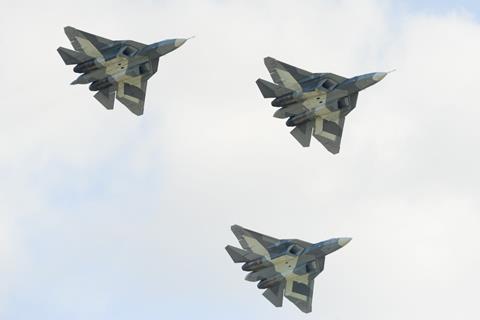
The DOT&E report notes the effectiveness of EPAWSS in a modern threat environment remains unknown, due to a shortfall in resources needed to conduct a thorough electromagnetic assessment.
While some EPAWSS functions have been successfully evaluated using open air testing, the Pentagon lacks sufficient data on the critical electronic attack capability due to “shortfalls in open-air threat representation and failure to collect comparison data of effectiveness without EPAWSS”, the DOT&E notes.
EPAWSS-equipped F-15s were pitted against both fourth- and fifth-generation aggressor fighters in testing. The USAF also maintains at least one squadron of F-35s dedicated to adversary air duty.
It is likely that a desire to conceal the electronic signals being broadcast by the sophisticated jamming system may preclude widespread open air testing, instead favouring a simulated alternative.
Despite the shortcomings in test capability, the DOT&E says the data that is available indicates the EPAWSS electronic attack capability is “potentially effective”.
Boeing has described the system as a “critical enabler” for the F-15EX, while BAE says EPAWSS will provide the jet “freedom of manoeuvre and deeper penetration into battle spaces protected by modern integrated air defence systems”.




